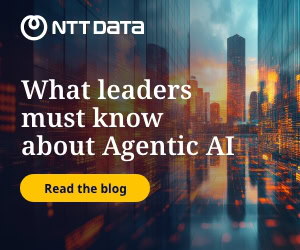Agentic automation is poised to revolutionise enterprise IT operations by enabling AI agents to autonomously execute complex tasks from routine development to incident handling, significantly freeing human resources for higher-value activities. Leveraging collaborative real-time data processing, these agents promise enhanced decision-making accuracy and resource efficiency.
However, adoption challenges include the urgent need to upskill IT teams, seamless integration with existing legacy systems, and effective governance over autonomous agents to align with organisational objectives.
Furthermore, risks related to fairness, transparency, security, and accountability require robust policies and AI observability. CIOs in Southeast Asia must strategically pilot multi-agent frameworks to unlock transformational benefits while navigating the evolving complexities of their digital transformation journey.

Aju Murjani, Automation Leader for IBM ASEAN, discusses what is arguably an opportune moment as CIOs in Southeast Asia orchestrate agentic automation integration into existing and future IT workflows.
Transformation and modernisation with AI agents
Murjani believes that today's organisations must urgently consider modernisation or transformation exercises with agentic AI. However, he emphasises that adopting the technology is not about following trends, but about strategically addressing business problems and delivering customer value.
"What we need to appreciate there is that we're not designing enterprises for just solving experiences. It's about customer experiences. As we define modernisation or transformation, it is about connecting systems to deliver business outcomes," he said.
Agentic AI, Murjani added, goes beyond "keeping the lights on". It empowers IT teams to sense, recommend, and automatically act to solve problems. This signals a shift from IT's role in providing reactive support to one of proactive transformation.
IBM itself is moving towards agentic AI IT automation. Murjani explains that the shift enables the company to deliver value to its customers. "It's a partnership with every customer. So, as agentic AI is important, the modernisation transformation outcome with a vendor like IBM is getting much more critical," he said.
Upskilling for Agentic AI
Modernisation and transformation are meaningless without allowing people to adapt to new technologies such as Agentic AI. Murjani is clear: the workforce needs to adapt to technology adoption.
"We need to take a step back because technology is evolving so quickly," he said. "The skills that we as individuals need to build on are a balance of business skills and IT skills."
Business skills, Murjani noted, mean appreciating outcomes from IT landscapes. In terms of IT skills, the workforce should understand and embrace enterprise applications of AI, such as prompt engineering, and the evolution of frameworks like MCP to A2A.
"When we look at skills, you also need to understand that what's going to help the enterprise solve the business problem and then hone in on those skills that are relevant for that enterprise landscape," he explained.
Ultimately, however, he ranks one skill above all: communication. "Communication is predominantly what people need to invest in," he said.
Integrating AI agents into the IT workflow
Upskilling equips the workforce, but organisations must also learn to integrate AI agents into the IT workflow with minimal disruption to normal operations.
To support this, Murjani shares IBM's three-step integration model, which includes orchestration, integration, and data-driven reflection.
Murjani said that the first step, orchestration, involves "understanding what is actually around the system landscape to get the best bang for the buck to be brought together."
Next comes the integration or merging of systems and processes where feasible. The last step is data-driven reflection, which involves providing AI agents with the data required to enable modernisation or transformation.
The structured approach enables vendors to assist customers and partners in identifying high-value solutions, mapping existing skills, and selecting the most suitable tools for their needs.
The goal is to build a roadmap that ensures they don't disrupt the existing systems while maintaining business continuity.
Establishing governance frameworks
To ensure that AI-driven decisions remain ethical, transparent, and compliant as AI models continue to evolve, establishing robust governance frameworks is crucial.
Examples of existing models and guiding structures Murjani points to are the Monetary Authority of Singapore (MAS) regulations, the EU AI Act, and ISO standards.
"It is important to appreciate that what we need to do within that organisation framework for embracing AI is to understand what data needs to be brought into a given model, what data needs to be transferred or learned from and obviously what data needs to be further built on so that you get towards the agentic nature of the business proposition that that AI framework allows you," he said.
Organisations looking into governance frameworks must align with industry context, according to Murjani.
"If you are in the financial industry, you obviously need to look at what MAS is rolling out. Suppose you work in the transportation or airline industry. In that case, you need to cross information across airlines, to baggage handling, so that we, as consumers, can truly get information in our hands to know if my flight is delayed, where it's delayed, why it's delayed, and what the remediation will be. Today, that's where agentic AI truly helps. However, it needs to be compliant with a given framework," he explained.
Prioritising AI agents
The market is already flooded with AI agents, but Murjani advises CIOs to prioritise investments based on business outcomes, not hype.
"Prioritise your investment by the value you want to get out of AI. It is not about just the use cases where AI can be relevant. It is the business outcome that you want to see AI accelerate," he said.
IBM embodies this philosophy in solutions like Watsonx, which enables organisations to apply AI capabilities to application landscapes for specific problem-solving.
He contrasts two concepts: Plus AI, which adds AI capabilities to existing solutions, and AI Plus, where AI is built into IBM's hardware and software. The latter, he says, is gaining momentum among customers.
"I come from a school of thought: It's not about just doing technology for doing technology. It's about using technology to solve a business problem," he said.
He also warns CIOs against fear-driven adoption: "Don't be a FOMO (fear of missing out). Focus on the ROI (Return on Investment) or the ROE (Return on Equity)."
Modernising and transforming IT with AI agents
Agentic AI is not a future hype; it is the now. Murjani believes that CIOs should treat modernisation as a long-term roadmap that tries to blend people, processes, and technology seamlessly.
"Understand what business problem they need to solve within technology or what innovation they need to drive for a given year or for that journey that they need to invest in. Organisations need to either deliver revenue, optimise costs, or improve innovation," Murjani said.
He reminds CIOs to focus on the problems they need to solve, as vendors continue to discuss AI.
In closing, Murjani left CIOs with a final reminder: "I say AI is not there for tomorrow, AI is there today to solve tomorrow's problem."






